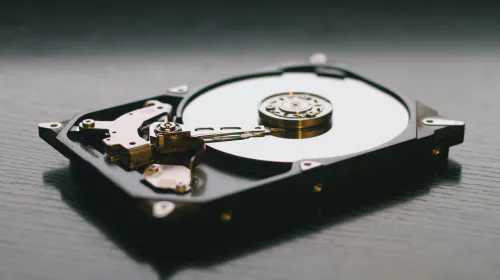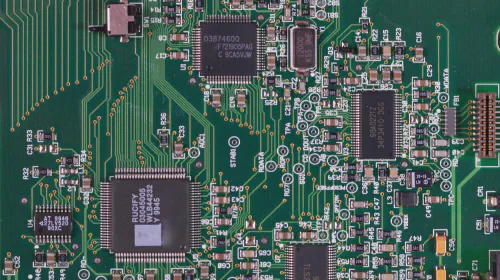Solana vs. Algorand - A Comprehensive Comparison
Salomon Kisters
Jun 16, 2022This post may contain affiliate links. If you use these links to buy something we may earn a commission. Thanks!
The blockchain sector and the cryptocurrency space are continuously growing and only getting bigger. An industry that started just over a decade ago is now home to the biggest innovations in the tech world.
As of 2022, this booming sector comprises more than 12,000 different cryptocurrencies based on at least 1,000 different blockchain networks. Each of these projects aims to tackle different problems using its own unique approach.
However, such a variety of options often leads the users to confusion. This happens especially when two or more projects look similar and attempt to deal with the same issues.
Over the past few months, the debate of Solana vs. Algorand has heated up. Due to many similarities between both blockchains, users often find themselves in a dilemma when choosing one between the two.
This article will compare different aspects of both projects and help you decide which one is better with a brighter future and more prospects for adoption.
About Solana
Solana was started in 2017 when Russian computer engineer Anatoly Yakovenko wrote the Solana white paper. He worked at Qualcomm for nearly 13 years, and led the development of distributed systems at Mesosphere and Dropbox.
Yakovenko observed the clock-less blockchain systems, such as Bitcoin and Ethereum, and noticed their inability to quickly process large numbers of transactions.
A centralized financial network, like Visa, can carry out about 24,000 transactions per second, while these blockchains could not be scaled beyond 15 transactions per second.
Yakovenko believed this problem could be solved by integrating an “internal clock” into the blockchain mechanism. Hence, he founded Solana Labs in 2018 to create Solana.
The team raised $20 million in funding till July 2019. However, the main network was launched to the public as late as March 2020.
Solana Labs is still the biggest contributor to the Solana blockchain, while the development and community building are handled by Solana Foundation - a non-profit organization based in Switzerland.
About Algorand
Algorand was founded by Silvio Micali in 2017 - Turing award winner and a professor at MIT. Micali is one of the best-known and most celebrated figures in the crypto world, especially for his work in zero knowledge-proof cryptography.
Algorand attempts to solve the same blockchain trilemma (decentralization, scalability, and security), which is also the concern of the Solana network.
However, it uses a different approach for this problem, i.e., pure proof of stake consensus mechanism - a variant of the traditional proof of stake model proposed by Micali. The fact that this mechanism does not rely on miners helped Algorand to achieve the title of the world’s first carbon-negative blockchain.
Algorand Inc. launched the test network to the public in April 2019, and the Mainnet went live two months after that, in June 2019. Its development is coordinated by Algorand Foundation - a non-profit based in Singapore.
The Consensus Mechanism of Solana
Solana’s consensus mechanism is a hybrid between proof of stake (PoS) and proof of history (PoH). Technically, PoH is not a consensus model but a cryptographic clock.
It helps Solana process tens of thousands of transactions every second without compromising the security and reliability of the blockchain network.
In PoH, nodes do not have to communicate and share large chunks of information to validate transactions. Instead, they consider the chronologically-stored historical records of transactions and events taking place on the blockchain.
Using this data, nodes can agree on the time order of the new transactions or events occurring on the blockchain. Each node has a clock of its own, making the entire network super-efficient.
The nodes that time-stamp the blocks are called validator nodes. Anyone can become a validator node by staking SOL on the blockchain. Currently, there are about 1,000 validator nodes on the Solana network alone. However, the transactions are distributed among a small group of 150 nodes, termed Solana Clusters.
The Solana network also integrates a number of other protocols with the PoH model to maximize the productivity of the network.
- Tower Byzantine fault tolerance
- Turbine
- Sealevel
- Gulf Stream
- Pipelining
- Cloudbreak
- Achievers
Thanks to these mechanisms, Solana can process about 65,000 transactions every second. However, most of these slots end up blank on the blocks, so the maximum potential has not been used yet.
The Consensus Mechanism of Algorand
Algorand uses the pure proof of stake model to reach consensus and add new blocks to the blockchain. The entire procedure can be divided into three phases: propose, soft vote, and certify the vote.
During the first phase, the blockchain randomly selects a committee of users via a procedure called cryptographic sortition. Each user has to prove that they are loyal to the committee by executing a verifiable random function (VRF).
When VRF indicates a user is chosen, a VRF proof is given to verify that the user is part of the committee. After that, the user can build a proposed block to be added to the chain and send it to the network for approval by the rest of the network members.
Another committee is selected using the same cryptographic sortition technique in the second phase. After getting chosen for the second phase committee, users inspect the proposed blocks from the first phase and verify them. In the final phase, the blocks are authenticated and added to the chain in a way that can never be modified or removed.
The likelihood of getting chosen for the blockchain committee depends on the amount of staked funds. Around 1,200 nodes are active on the Algorand blockchain at the moment. But the network is operated by 100 relay nodes. All of the relay nodes are owned by Algorand Inc., Algorand Foundation, and early investors.
This setup allows Algorand to validate almost 1,100 transactions per second. However, after an upcoming Algorand update, the network will be able to process 46,000 in the same duration.
The Tokenomics of Solana
The native coin of the Solana blockchain is called SOL. It is used to pay transaction fees and can also be employed for governance purposes in the future.
Though SOL does not have any fixed maximum supply, the current unfixed maximum supply is about 511,616,946 SOL with a circulation supply of 340,434,768 SOL.
The inflation rate started at 8% and will reduce to just 1.5% in 15 years. In the Solana network, 50% of all the transactions are burned, potentially leading Solana to the deflationary path.
25% of the initial total supply was given to the Solana Labs, while 38% was allocated to the community treasury under Solana Foundation’s custody. Apart from that, 35% was purchased by the earlier investors. Only 2% was sold to retail investors.
The Tokenomics of Algorand
Algorand also has a native token called ALGO. Users need it to pay transaction fees and get a say in governance matters. However, the scope of the latter is limited as of now.
ALGO has a fixed maximum supply of 10 billion coins, which means that this currency is also deflationary in nature. The current total supply is around 7.2 billion, out of which only 6.87 billion ALGOs are in circulation.
25% of the total supply was allocated to Algorand Inc. and Algorand Foundations. Both organizations sell their holdings as needed according to a predetermined selling scheme.
The remaining 7.5 billion ALGOs are supposed to go to the blockchain ecosystem, most of which have been sold to the early investors running Algorand relay nodes.
Adoption of Solana
Most of the institutional adoption for Solana has occurred in the private sector. Even that has mostly been maintained within the cryptocurrency space.
Probably the most important example is Solana’s partnership with the FTX Exchange, which is on its way to becoming the largest centralized cryptocurrency exchange in the world. All of FX’s decentralized applications are based on the Solana blockchain.
Apart from that, Alameda Research has been investing several hundred million dollars into projects that are either built on the Solana blockchain network or somehow linked to it.
Adoption of Algorand
Algorand has been doing exceptionally well in institutional adoption in the public sector. There are several examples to point out here, but the most important of them are discussed next.
- SIAE - the largest copyright agency in Italy - has partnered up with Algorand to store almost four million copyrights on its blockchain.
- Algorand is helping the government of El Salvador to build El Salvador’s own blockchain ecosystem. The blockchain has also partnered with the Republic of the Marshall Islands to mint its digital currency - Marshallese Sovereign.
- Algorand is most notably working with Exodus Wallet to help them issue their tokenized shares on the Algorand blockchain in the private sector.
Who Wins the Comparison?
We already know, on the surface, Solana and Algorand are similar projects trying to solve the same issue. But at their core, both are different and use different approaches and mechanisms.
So, which one of them is actually better at what they do?
If we talk about network efficiency, Solana can execute more than 60,000 transactions than Algorand in one second. Although Algorand is set to increase its block completion speed, Solana clearly wins in this area right now.
However, you must note that the Algorand network has never gone down ever since its initial launch - something very few blockchains have managed to achieve. On the contrary, Solana has experienced multiple shutdowns since its launch.
In terms of staking, Solana again takes the prize. The ease in the procedure and the five-day lock-up for an extra 2% yearly make staking on the Solana network well worth it for the users.
Though Algorand leaves Solana miles behind when it comes to institutional adoption, we cannot be sure that this adoption will positively impact the price of ALGO. If the adoption results in an increased demand for the currency (which they do not, as of now), ALGO may see huge spikes in price.
In conclusion, Solana wins, proving itself a better option for users between the two. However, if Algorand fulfills all its promises and addresses the problems it is facing, tables can turn very easily in the futur
Stay informed with the latest insights in Crypto, Blockchain, and Cyber-Security! Subscribe to our newsletter now to receive exclusive updates, expert analyses, and current developments directly to your inbox. Don't miss the opportunity to expand your knowledge and stay up-to-date.
Love what you're reading? Subscribe for top stories in Crypto, Blockchain, and Cyber-Security. Stay informed with exclusive updates.
Please note that the Content may have been generated with the Help of AI. The editorial content of OriginStamp AG does not constitute a recommendation for investment or purchase advice. In principle, an investment can also lead to a total loss. Therefore, please seek advice before making an investment decision.

Blockchain Full Nodes: Functions, Types, and More | OriginStamp
Learn about blockchain full nodes, their functions, types, and more. Discover how full nodes store complete blockchain data and perform various tasks.

What is Solana, and What are Its Use Cases?
Solana is a modern blockchain that differs significantly from the Bitcoin network. This post will discuss Solana and its use cases.

What is Blockchain Analytics, and How Does It Work?
You might have heard of data analytics before. But what is blockchain analytics, and how does it work?
Protect your documents
Your gateway to unforgeable data. Imprint the authenticity of your information with our blockchain timestamp